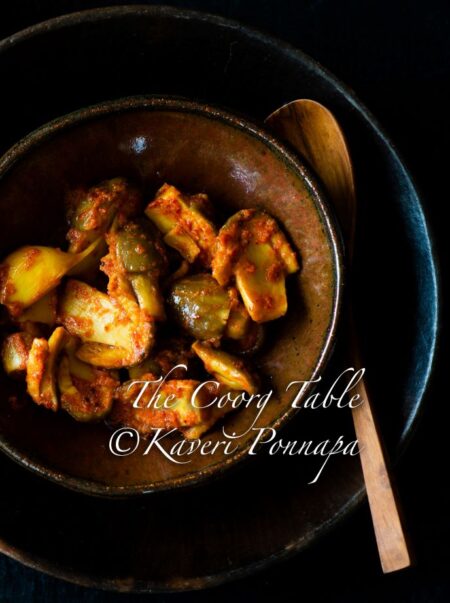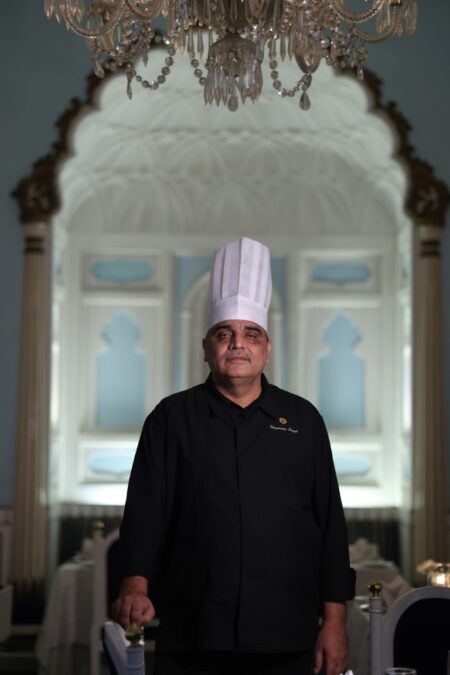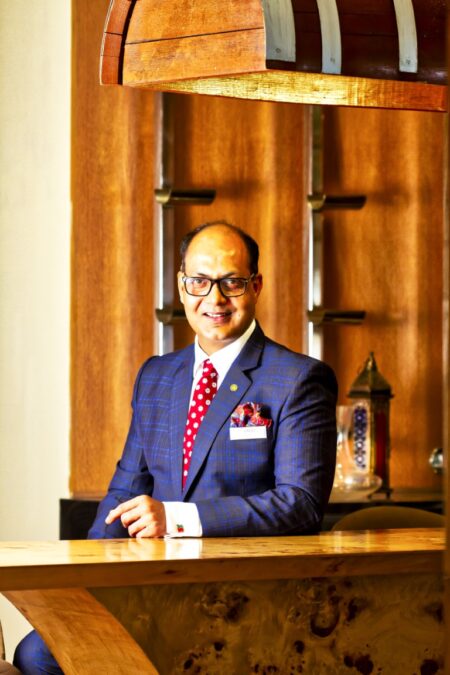Kaveri Ponnapa: You have mentioned elsewhere that there was an element of chance, a series of coincidences that led you to becoming a sommelier. Would you like to tell us about some of the experiences that led you to the world of wine?
Raj Vaidya: I started working in the restaurant business shortly after arriving in the States in 1996, first cooking bagels for a bagel shop in New Jersey while in high school and slowly working my way up to a line cook in a simple diner. Eventually as I continued these part time jobs I transitioned into front of house work, first as a busboy, then a waiter and bartender. I recall a pretty nice restaurant where I worked in college as the first place I had worked which had a sommelier, and this seemed to me at the time like a pretty good gig.
I took a course in Organic Gardening during my time at Rutgers University and one day in class, the professor offered up an internship at a garden in rural NJ which was attached to a restaurant. I jumped at the opportunity; the thought of connecting the work of farming directly with a kitchen greatly appealed to me, and so I started working as a farm-hand part time at the Ryland Inn restaurant. This got my foot in the door to work as a waiter there, and a few months into starting I had proven to my employers that I had a great level of interest and knowledge about the cuisine and ingredients, being that I was growing and harvesting the veggies all morning and then serving them in the evening. The Chef recognized my heightened level of interest and offered me a job as a sommelier, he figured that I could probably learn what I needed to know and since I had zero experience in the field I’d be cheap!
This started my career in an amazing way. The cellar at the Ryland was deep and broad, with many old vintages and great wines which I got to uncork and taste constantly. The economy was not strong at the time and so instead of buying younger, less expensive wines I was encouraged to pull wines from the cellar to pour with the tasting menus, allowing me carte blanche to really expand my tasting experience. Most restaurants even today do not pour wines like that by the glass but since the place was cash-flow poor I got to do as I pleased with what we already had! Quickly I fell in love with the great wines of Germany, Burgundy and the Rhone Valley and from there I was hooked.
KP: Sommeliers are most often required to ‘read’ a table and interpret what would be the perfect bottle –or bottles –of wine for a guest. Given the range and depth of the wine list at Daniel, the scale of the dining experience and the fact that New York gets a large number of visitors from very diverse backgrounds, a lot happens in a very short space of time –how do you approach an evening at Daniel?
RJ: Since I started in the business with zero knowledge and experience and had to manage a list of great wines, I was lucky to learn early not to try and lie to my customers about my knowledge. Very quickly I realized that most of my customers knew more about wine than I did, and instead I opted to approach them and their choices with as much humility as a man in his early twenties can muster.
At Restaurant Daniel we have what must be amongst the most sophisticated and knowledgeable group of customers in the world. We also have a very large group of people from all walks of life and all corners of the globe coming to dine and drink with us, so one needs to be very acute in evaluating whether or not a bottle is right for any one guest. I always begin by asking a cheating question, which is “what do you like to drink at home or better yet, what have you had to drink recently which really excited you?” These questions allow me to gauge the guest’s level of interest, they’re general taste preferences, and very importantly, the amount of money they feel comfortable spending on a bottle. If a guest answers with wines that we have on the list I like to offer to pick something else within that style or category. If they like something we don’t carry I like to offer them a classic example of a wine within the category from France, which is our strength on the list.
KP: Typically, wines tend to be chosen around a meal. Would you like to see more people choosing a wine and building their choice of dishes around it?
RJ: We actually do that here pretty often. I am lucky to work for one of the few amongst great chefs in the world who not only knows a good deal about wine and pairing it with food, but cares immensely about it too! Chef Daniel Boulud is as deft a pairing expert as any, so I can go to him and create a menu around a special bottle of wine. He and his Executive Chef at Daniel, Jean-Francois Bruel are both not only open to the idea of tinkering with menus or individual dishes to fit the wines but are also excited to do so.
KP: What are the wines you would like to see being drunk more frequently?
RJ: The two categories of wine I’d like to see drunk along with cuisine more frequently are champagne (with savory food throughout the menu, as opposed to only as an aperitif) and off-dry German Rieslings (not only with rich dishes like Foie Gras or dessert, but with a whole menu).
KP: You have been at Daniel since 2009. How have you influenced the personality of the cellar?
RJ: I have had enough time in my current role to amass what I think is one of the great Burgundy Cellars in America, which I am very proud of. I also pushed the focus towards representing small farmer-producers and the best of Germany and Champagne.
KP: Chef Daniel Boulud is one of the great chefs of our time, known for his love for, and knowledge of wine. He has written about the depth of emotion that is invested in wine in is his Letters to a Young Chef. Do pairings on the menu tend to be Chef driven, or sommelier driven? Or a partnership?
RJ: This is really quite collaborative, although in many ways it is the kitchen that drives the experience here. I like to reiterate often that nothing I do in my job is particularly creative; I select combinations of beverages to please my guests but I don’t make wine, nor create anything. I am a curator more than an artist for sure. When wine is meant to be the star of the evening, for example if we are writing a menu for a wine dinner or special bottle, the chefs defer to my input as to which of their creations is best to choose. But when it comes to our menu in the dining room, I simply rely on my tastings of the dish and my knowledge of the style of cuisine the chefs produce to help guests pick the right wines.
KP: Do you think the point system of rating wines may inhibit people –particularly in countries where the wine drinking culture is relatively young – from being more adventurous in exploring lesser known, but very good wines?
This is a huge concern, even more so in Asian countries where there is no historic culture of wine appreciation. I recognize the value of such a system for a knowledgeable consumer, but for a novice it robs them of the opportunity to learn about their own taste and palate. I personally have never learned anything about a wine by reading a score.
KP: What would you consider to be some of your most exciting ‘finds’ over the years?
RJ: The wines of Chinon, Cabernet Franc from the Loire Valley in France and how amazing they are with spicy Asian food has been a favorite of mine. Also how Champagne can offer such a complex pairing with rich meat and seafood dishes later in the menus, and how versatile Champagne is in general.
KP: How would you like to see the wine program at Daniel grow? How do you keep the excitement alive?
RJ: I am lucky to be able to visit the wine regions of the world frequently and continue to learn and taste the newest and best the world has to offer. We are also lucky to be able to cellar wines for a period, such that they evolve and change and this always keeps my interest. I am happy to see us putting away the great new wines made on the west coast of the US and in the Rhone valley to see how they age, and to be able to bring them more attention as age worthy wines in the future.
KP: What are the changes you have seen in the last decade in what people are drinking?
RJ: The seismic shift from everyone drinking top Bordeaux to drinking and collecting top Burgundy has come full circle, which is the biggest high market change I have been able to observe in my career. Also, a movement away from high alcohol and low acid wines towards more food friendly, and energetic bottles.
KP: Have you had the opportunity to observe the growing wine drinking culture in India? What are your thoughts on how it could be promoted?
RJ: When I was growing up in Bombay in the 80’s, the only bottles of wine I occasionally saw were bottles brought back from the west and very poorly stored in kitchen cabinets through the hottest parts of the year. It is no wonder then that wine culture was slow to develop, as the bottles when uncorked must have been pretty awful.
The fact that import duties are so obscenely high makes wine unreasonably expensive in India, and this I see as a huge handicap. The wines produced in India have over 90% market share, which appears great on paper. But the reality is that anyone who loves fine wine is actually buying their bottles in New York, Singapore or Dubai. If imports were able to be sensibly priced then the local producers would have to up their quality game. I truly believe that the potential to produce great wine exists in India, but I have yet to taste wines that are really in the top quality bracket. Possibly adding this level of competition with international wines on a price level that is even will bring about this raise in quality. It will certainly increase awareness and knowledge of the wine drinking public, which is the end result we all hope for.
KP: Early in your career, you have had experience working as a chef. What do you enjoy cooking for yourself at home, and what wines do you enjoy drinking with it?
RJ: As I have gotten older the food I cook at home as gotten to resemble more and more my grandmother’s kitchen. With my family far away the food I miss the most is what I cook today. I mostly cook simple Maharashtrian food at home, and tend to drink light fresh wines like Riesling from the Mosel, Chenin Blanc from the Loire and Chardonnay from Chablis with these meals.
This article appeared in Sommelier India, Vol 10, Issue 1, February-March 2015.
Image Credits: Restaurant Daniel




